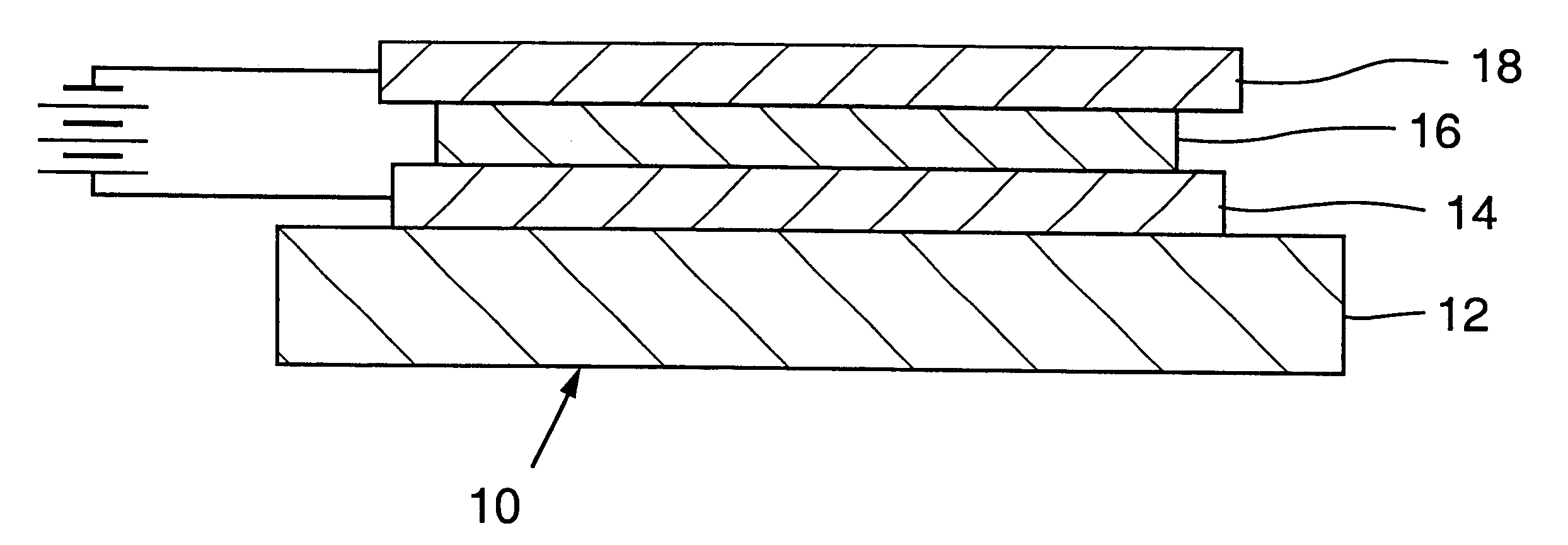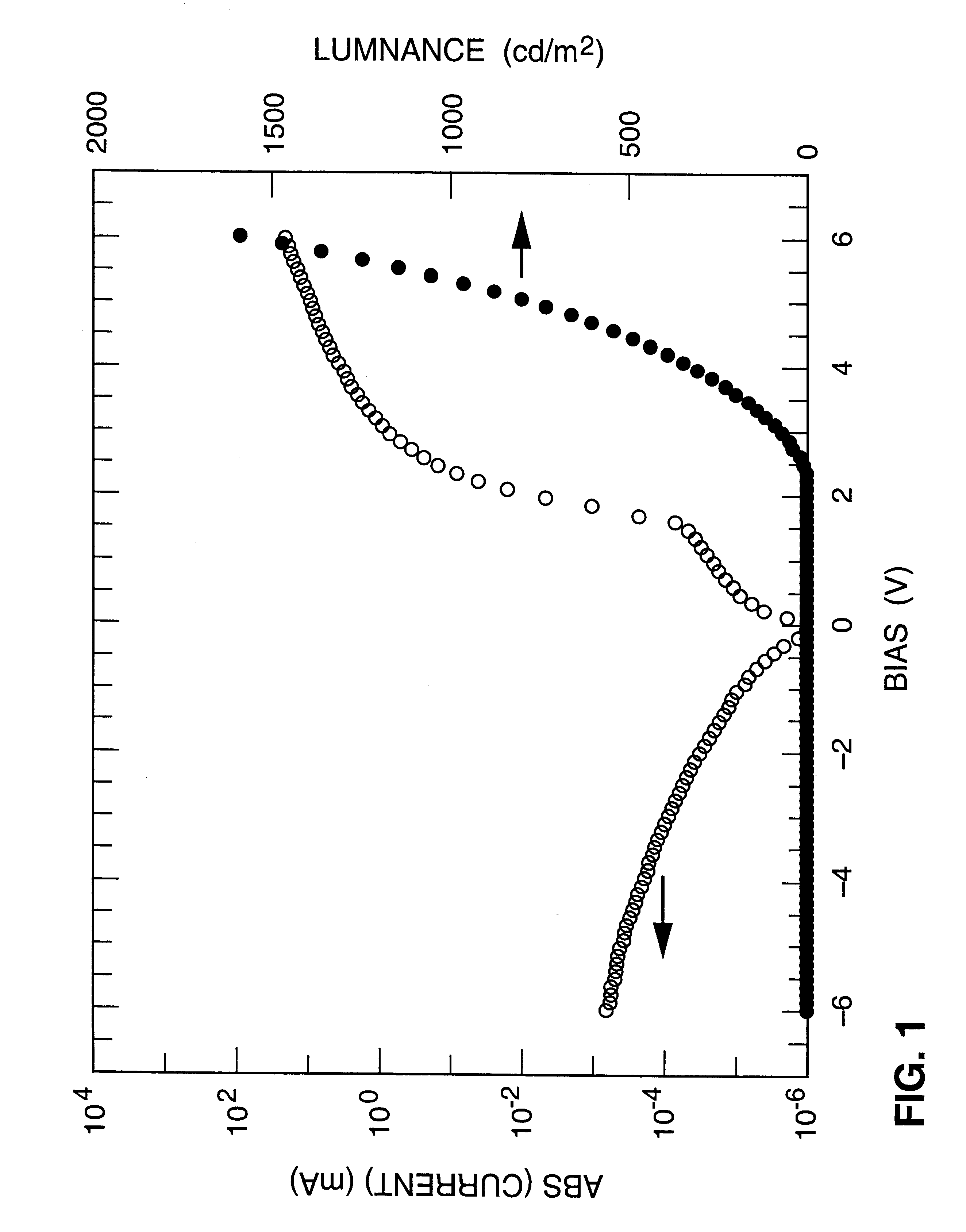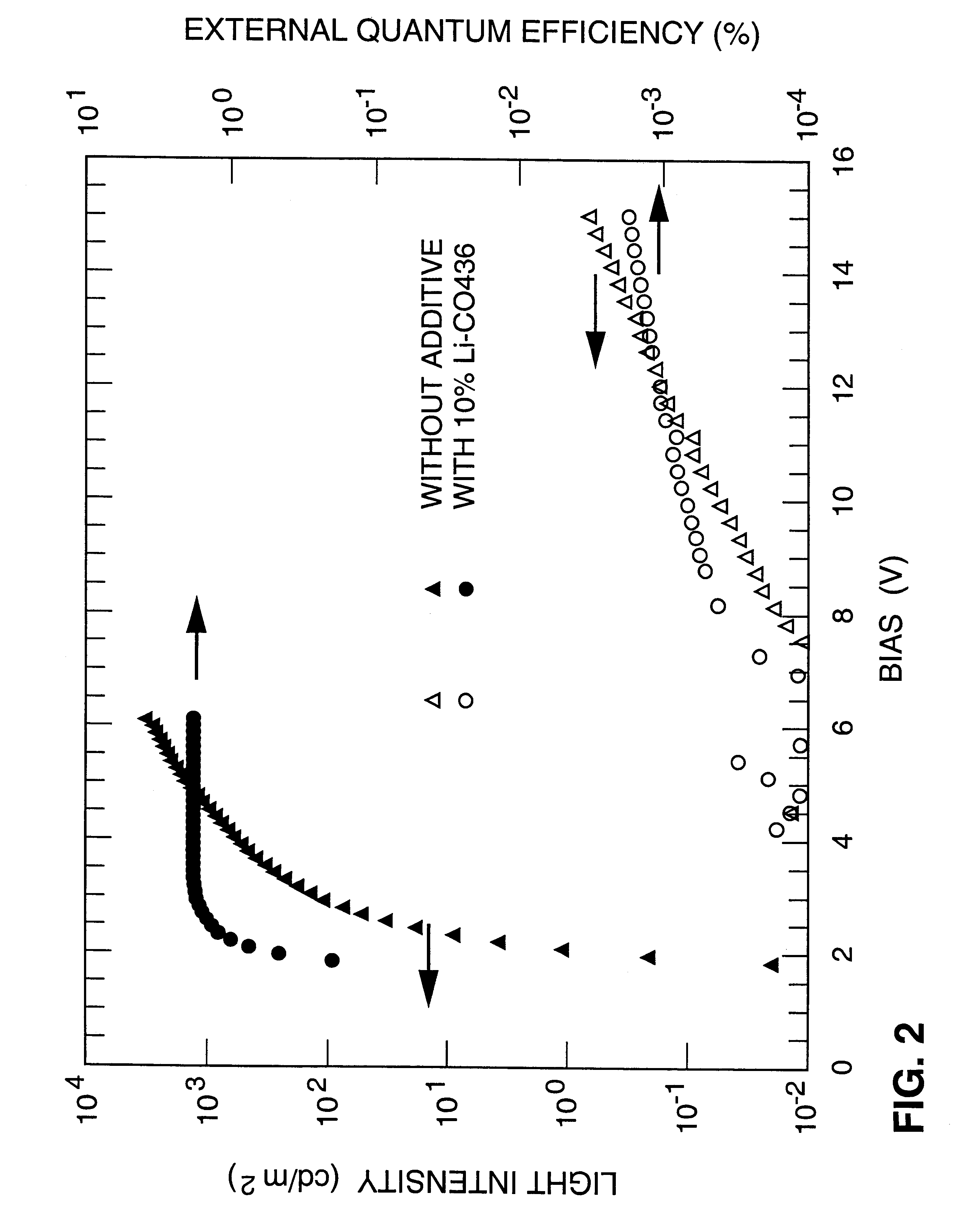Electrically active polymer compositions and their use in efficient, low operating voltage, polymer light-emitting diodes with air-stable cathodes
a technology of polymer compositions and compositions, applied in the direction of instruments, non-metal conductors, conductors, etc., can solve the problems of inherently brittle devices, lack of mechanical and processing advantages, and difficulty in fabricating large-area displays, etc., to improve electron injection into these polymers, improve the effect of efficiency and excellent environmental stability
- Summary
- Abstract
- Description
- Claims
- Application Information
AI Technical Summary
Benefits of technology
Problems solved by technology
Method used
Image
Examples
example b
Preparative Example B--Preparation of Lithium Ether Phosphate
The lithium salt of ether phosphate can be prepared following exactly the same procedure as in Example A. However, since many surfactant producers supply ether phosphates in free acid form, the first step preparation of free acid) can be omitted. The neutalization, drying and solution preparation are the same as in Example A. Some of the lithium ether phosphates and sulphates which were prepared are listed in Table 2.
example 1
Light-mitting devices were fabricated in the following way: 15.0 .mu.L of 10% (w / V) tetra(oxy-1,2-ethanediyl), .alpha.-sulfo-.omega.-(nonylphenoxy)-lithium salt in xylene was added into 2.5 mL 0.6% MEH-PPV. Thin films of MEH-PPV containing 0.1 part (w / w) of lithium nonylphenyl tetraethyleneoxide sulfate per part of MEH-PPV were spin cast onto ITO-coated glass substrates. The layers were subsequently heated for 1 hour at 60.degree. C. on a hot plate to eliminate residual traces of solvent. The coated substrates were then transferred into a thermal evaporator for deposition of the cathode; the cathode was formed by thermal evaporation of a 2000 .ANG. thick aluminum layer onto the top of the electroluminescent layer.
Upon k of a voltage between the indium / tin-xide and the aluminum contacts, emission of orange light was observed only when the ITO was wired as the positive terminal. This fact indicates that the device operates as a diode. FIG. 1 shows the I-V characteristic and light outp...
example 2
Example 1 was repeated and the ratio of the additive to MEH-PPV was varied to include the following values: 0.05, 0.15, 0.20, 0.40. FIG. 3 shows the dependence of the external quantum efficiency on the this ratio.
This example demonstrates that only small amounts (about 10%) of the additive are needed to provide a dramatic improvement in the efficiency of the polymer LED.
PUM
| Property | Measurement | Unit |
|---|---|---|
| Fraction | aaaaa | aaaaa |
| Fraction | aaaaa | aaaaa |
| Fraction | aaaaa | aaaaa |
Abstract
Description
Claims
Application Information
 Login to View More
Login to View More - R&D
- Intellectual Property
- Life Sciences
- Materials
- Tech Scout
- Unparalleled Data Quality
- Higher Quality Content
- 60% Fewer Hallucinations
Browse by: Latest US Patents, China's latest patents, Technical Efficacy Thesaurus, Application Domain, Technology Topic, Popular Technical Reports.
© 2025 PatSnap. All rights reserved.Legal|Privacy policy|Modern Slavery Act Transparency Statement|Sitemap|About US| Contact US: help@patsnap.com



